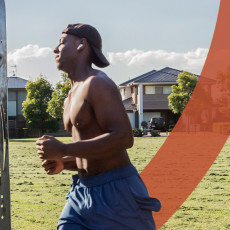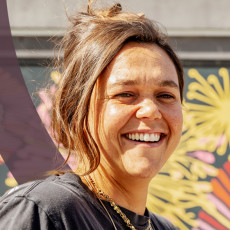Leadership Goal
Objective
To deliver healthy and inclusive places founded on equity for people of all ages and abilities.
Target
To enhance Landcom’s international status for delivering world class liveable places founded on equity, affordability and inclusion. Residents report overall 90% satisfaction with quality of life.
Relevant Sustainable Development Goals
5 Year Results
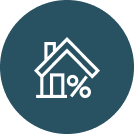
Over the past five years Landcom has released: 1,607 affordable homes, including 279 Affordable Rental Housing releases, 2,557 diverse dwellings and 1,528 dwellings that will be designed to Universal Design principles.
 82%
82%
Average of residents surveyed over the past five years reported satisfaction with quality of life.
 93%
93%
Average of residents surveyed over the last five years reported feeling safe in their communities.
 89%
89%
Average of residents surveyed over the last five years report high physical and mental health, reflecting project design, programs or events that encourage active, social and healthy lifestyles.
Overview
Landcom’s Healthy & Inclusive Places pillar is focused on a leadership goal to ‘enhance Landcom’s international status for delivering world class liveable places, founded on equity, affordability and inclusion by 2036'.
This leadership goal was developed to reflect our commitment to meaningfully contribute to the United Nations Sustainable Development Goals25, and reduce the impact of shocks and stresses to communities and infrastructure, such as social cohesion and affordable housing as identified by Resilient Sydney26 (part of the Rockefeller Foundation 100 Resilient Cities Program).
Within this pillar Landcom focuses on how well a place delivers quality of life to its communities and the resilience of those communities. It encompasses economic prosperity and affordability, social stability and equity, accessibility, education, health and wellbeing, and integration of culture and heritage.
Liveable communities are healthy and inclusive. A well-designed community takes into account the needs of people today, and the needs of our future generations. We consider where people will work, learn, spend their leisure time and how they move from place to place. Landcom also believes that the built environment should incorporate green spaces and retain a connection to our natural habitats for the benefit of the environment and our communities.
Landcom addresses liveability through the following focus areas:
-
Health, Equity & Inclusion, Community Connection and Safety
-
Affordability and Diversity
-
Design through Engagement.
Each of these focus areas includes a suite of targets to measure our success.
_________________________
25 United Nations Sustainable Development Goals (2018) to see our full alignment to the SDGs see APPENDIX D: Sustainable Development Goals Alignment
26 Resilient Sydney (2018)








Red Room Poetry
In May 2022, Landcom launched the first workshop with Red Room Poetry supporting their ‘Poem Forest’ program.
Read more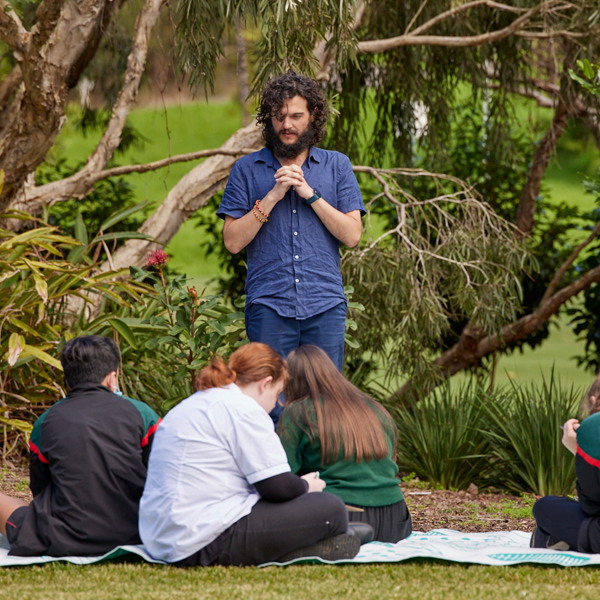
Queenscliff Affordable Housing
Housing affordability is an issue right across the state, including the Northern Beaches. Landcom has partnered with Link Wentworth Housing Ltd (Link Wentworth) on the adaptive reuse of the former Queenscliff Community Health Centre into a small, low-scale development with affordable housing.
Read more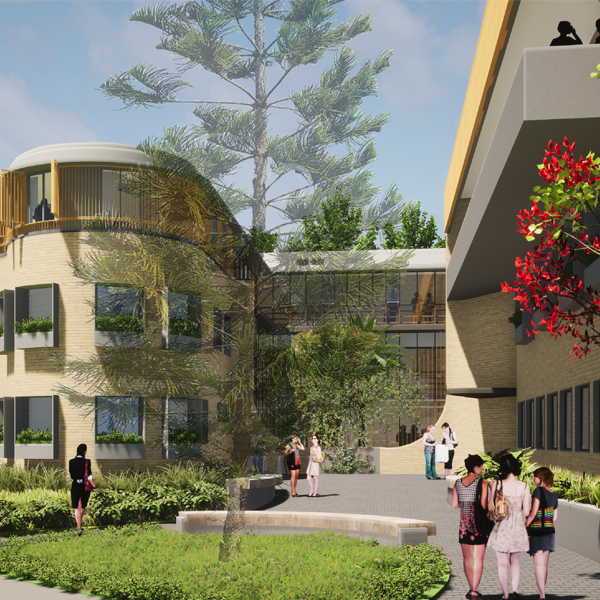
Designing a new neighbourhood park and road at Hills Showground Station Precinct
During 2021, we led an extensive stakeholder and community consultation to guide the design of a new neighbourhood park and road in the Hills Showground Precinct.
Read more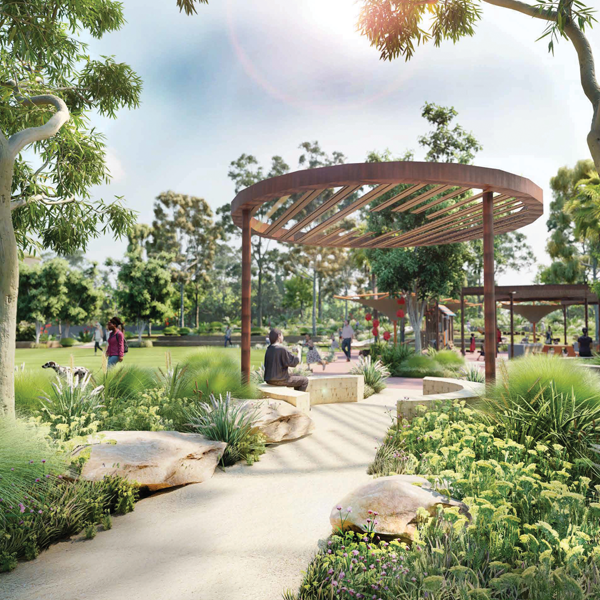
Lachlan’s Line and the Design Review Panel
Landcom has a strong legacy of delivering exemplary design. For over ten years, we have incorporated independent expert design review as a fundamental component of our project delivery process.
Read more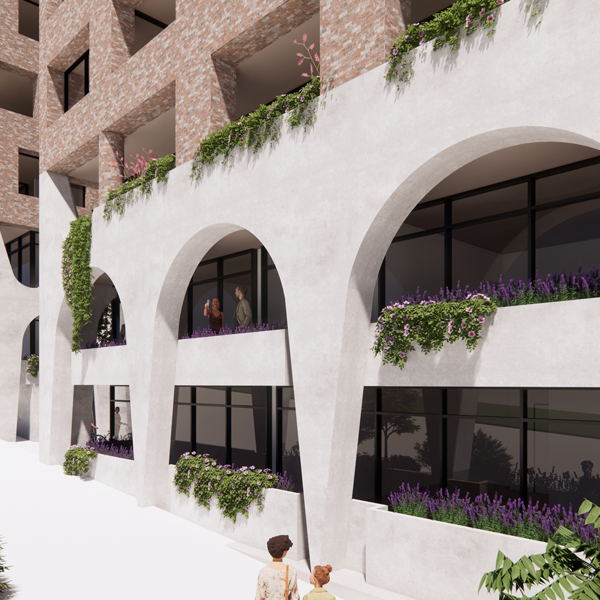
Management Approach
Landcom adopts a holistic approach to the delivery of healthy and inclusive places founded on equity for people of all ages and abilities.
For new projects we undertake social needs assessments to understand what amenities, services or programs are currently available to the immediate and surrounding community, and what gaps may need to be filled. We use this information to inform our future planning for infrastructure and community development programming.
As residents begin to live onsite we commence a continuous feedback loop via our Healthy & Inclusive Places survey (HIPs). This is an engagement tool used to gather data from residents of Landcom communities measuring satisfaction across dimensions such as design, community connection, safety, wellbeing, housing affordability and diversity, based on the residents’ lived experience. We have adopted performance targets across these dimensions, striving for continuous improvement to meet the quality of life expectations of current and future residents.
To benchmark Landcom’s results against industry standards, the survey also incorporates the Personal Wellbeing Index (PWI)27. The PWI is designed to measure satisfaction with quality of life across seven domains: standard of living, health, life achievement, relationships, safety, community connectedness and future security. Landcom uses resident satisfaction across the core elements of the PWI to measure success against our leadership goal to ‘enhance Landcom’s international status for delivering world class liveable places, founded on equity, affordability and inclusion by 2036’.
We use the results and resident feedback from the HIPs survey each year to drive performance improvements in the way we deliver our projects. This can include adjusting our approach to the design and delivery of future stages of a project or influencing the way we deliver community development programs and services.
Based on low FY18 performance results against our Community Connection targets we committed to undertake an evaluation of our Community Development and Welcome Program to determine past successes and areas of opportunity. The assessment found Landcom would benefit from an overarching framework to guide the way we approach and deliver community development. A shift to impact reporting would also support consistent evaluation of success and ability to communicate value creation.
In FY22, despite the ongoing challenges of COVID-19, we continued to implement our community development approach by leveraging strategic partnerships to deliver initiatives that foster community connection and a focus on health and wellbeing. In FY22 we saw the impact of our approach, with positive results, particularly in terms of health and wellbeing, reported from participants of our individual community development programs.
For our FY22 performance results measured by our Healthy & Inclusive Places survey, see Health, Equity & Inclusion, Community Connection, and Safety.
_________________________
27 International Wellbeing Group (2013). Personal Wellbeing Index: 5th Edition. Melbourne: Australian Centre on Quality of Life, Deakin University
In FY21 Landcom updated our Housing Affordability & Diversity Policy (now referred to as Housing Policy), setting new targets to drive the delivery of diverse, affordable and accessible homes. The Policy is a clear reflection of Landcom’s commitment to create more affordable and sustainable communities. Our new targets came into effect on new projects from FY22. For all projects commenced between FY17 and FY21 Landcom’s previous Housing Affordability & Diversity Policy still applies, and we will continue to report the performance of those projects against the legacy policy, alongside our reporting against the updated policy.
Landcom’s targets in place for FY22 require a minimum 10% of housing in our projects to be provided as Affordable homes. This target is comprised of 5% Affordable Rental Housing. Landcom defines affordable Rental Housing as dwellings managed or owned by a Community Housing Provider (CHP). CHPs are not-for-profit organisations that build and/ or manage housing for eligible people on very low, low and moderate incomes or who are unable to access appropriate housing in the private market. The remaining 5% of the target may be comprised of Affordable Rental Housing and/or other housing products which improve housing affordability more generally.
These include:
- private market housing for purchase which is affordable for moderate income households or below
- private market housing for purchase by the ‘first home buyer’ segment of the market
- housing products which are delivered using design or construction techniques that lower the purchase price and contribute to improving housing affordability
- innovative tenure models that provide households with a form of home ownership or other tenure that improves housing affordability, such as fractional ownership and shared ownership schemes.
We also address housing diversity and accessibility. We aim to deliver a range of tenure options for owners and renters, improve the range of home options available in the market especially for first home buyers, and ensure people have the ability to access fit-for-purpose housing throughout their lifetime. From FY22 Landcom’s Housing Policy requires that all new projects deliver 15% diverse housing.
We complement this by advocating for and requiring accessible homes that include Universal Design principles and are Liveable Housing Australia (LHA) certified so that any person can use a dwelling, irrespective of age, level of mobility, or condition of health.
From FY22 all medium and high density housing in new Landcom projects will be required to include at least 30% housing that is universally designed. This means the housing will meet or exceed LHA SiIver Certification. Landcom also encourages universal design for detached housing. Project teams are also strongly encouraged to deliver more than 30% universally designed housing where feasible.
For our FY22 performance against our Affordability & Diversity targets, see Affordability & Diversity Performance Results.
We maintain a commitment to excellence in design and meaningful stakeholder participation from all those who have a stake in the evolution of our cities, including the communities which know them best.
Landcom has an established Design Review Panel (DRP). The DRP provides advice to Landcom on strategies to achieve design excellence and quality of urban design outcomes across our project portfolio. The DRP consists of four experts in the field of architecture, urban design, landscape architecture and urban planning. They provide expert review of projects in concept or masterplan design, with the aim of achieving design excellence. The objectives of the DRP are to support Landcom project teams with a critical design review process and provide access to industry experts for guidance and support.
As part of our management approach all projects are required to present to the DRP as they progress through the masterplan and design stages. In addition, active projects that make significant reviews to future stages must also present to the DRP. Landcom’s aim is that this robust process will ensure enhanced design outcomes for the communities we deliver.
In late FY21 we updated the membership and focus of our DRP and adopted new Terms of Reference to ensure that this internal design review function is efficient and focused on our core business needs. The changes included:
- reducing the size of the Panel from seven members and a chair, to three members and a chair
- focusing the Panel’s remit to be predominantly on project design related advice
- renaming the Panel to be the Design Review Panel.
Landcom’s Join In Framework guides our approach to stakeholder engagement. The Framework includes a charter and protocol that have been developed in accordance with the International Association for Public Participation (IAP2) guidelines, which seek to ‘promote and improve the practice of public participation or community and stakeholder engagement, incorporating individuals, governments, institutions and other entities that affect the public interest throughout the world.28
_________________________
28 International Association for Public Participation Australasia (2018)
We aim to be:
|
Collaborative Working with stakeholders with an interest in delivering positive project outcomes |
Purposeful Planning and resourcing engagement to support project delivery |
|
Proactive Engaging stakeholders early and throughout project planning and delivery and making it easy for them to participate |
Accountable Being clear about the purpose of engagement, level of influence and how the influence has shaped recommendations and decisions |
|
Inclusive Engaging stakeholders with different needs and interests |
For our FY21 performance against our Design through Engagement targets, see Design through Engagement Performance Results below.
Our Sustainable Places Strategy identifies a number of future opportunities to enhance our Health, Equity and Inclusion and Community Connection focus areas. This includes reviewing our targets relating to our Health, Equity and Inclusion and Community Connection focus areas to ensure we are responding to changing market needs.
Performance Results
See below our performance results for each of the reporting areas within our Healthy & Inclusive Places Pillar.
Health, Equity & Inclusion, Community Connection & Safety
Targets
Performance
2036 Goal: 90% of residents report satisfaction with quality of life29
Performance
Targets
90% of residents report high quality public, active and sustainable transport options to key amenities, services, and employment
Performance
Targets
90% residents report high physical and mental health, reflecting project design, programs or events that encourage active, social and healthy eating lifestyles
Performance
Targets
90% of residents report overall satisfaction with the integration of culture and heritage
Performance
Targets
90% of residents report community cohesion, by fostering the integration of community networks and facilities in our projects
Performance
Targets
Achieve a culture of safety through our organisation, and on all Landcom projects, striving for 90% of residents reporting feeling safe
Performance
_________________________
29 In the 2021 report the ‘satisfaction with quality of life’ KPI was incorrectly reported as the result of ‘overall satisfaction with living in [community]’ rather than the Personal Wellbeing Index. This has been corrected here.
Performance Overviews
During the reporting year we continued to focus on rolling out partnership programs to our communities. As in previous years, a strong emphasis was placed on projects where Landcom partners with Land and Housing Corporation to deliver social and market housing, in order to drive greater equity and access to programs and services. Activities undertaken in FY22 that supported community health, equity and inclusion included:
- Red Room Poetry – Poem Forest initiative
- Live Life Get Active free fitness classes
- National Theatre for Children – mental health program.
Activities undertaken in FY22 that supported community connection and the integration of culture and heritage include:
- movie night
- mobile library
- baby rhyme time
- baby rhyme time
- seasonal COVID Safe community events including a digital QR code egg hunt, Santa drive-by and seniors’ event.
In FY22 Landcom supported two resident-led community associations at Macarthur Heights and Renwick with seed funding to enable their operations and facilitate the delivery of a range of community events. We also supported the two associations with bespoke training focused on event management to build confidence and knowledge in this area.
Our historical performance results against Community Connection measures continue to show lower satisfaction by residents for community cohesion (64%) and the integration of culture and heritage (49%) compared with other indicators in the survey. As our project portfolio transitions from legacy projects to new communities, embedding the learnings from the Community Cohesion results early in the planning phase, will be a key focus for Landcom.
In FY22 we continued strengthening our approach to community development with a focus on partnerships with organisations that offer impact measurement. While COVID-19 delayed the roll out of some of these initiatives in the first half of FY22, there was some traction in the results of these programs in the second half of the financial year, particularly in health and wellbeing.
Impact reports for Live Life Get Active fitness class members show improvements across the board for all five Landcom supported camps, such as reduced risk of health issues like pre-diabetic risk and obesity. We also measured improved mental health awareness for students who participated in the ‘Mind Masters’ mental resilience program which was facilitated by our partner National Theatre for Children.
In FY22 we once again surveyed participants of the HIP Survey on the impact of COVID-19. Respondents continued to report widespread negative impacts of COVID-19 on many aspects of their lives with the most common negative impacts identified relating to physical and mental health.
This feedback is consistent with the results we received for our correlating target within our Health, Equity & Inclusion Indicator in HIPS, which saw the biggest decline from 89% to 84% in FY22. To address these results Landcom will continue to deliver on programs that support physical and mental health outcomes in FY23.
In FY22 residents continued to report high levels of perceived safety (94%) either at home or within their community. We ask residents to rate their sense of safety from ‘very unsafe’ to ‘very safe’ in the following situations:
- at home alone during the day – 98% of residents report feeling safe or very safe
- walking alone within their community during the day – 98% of residents reporting feeling safe or very safe
- at home alone during the evening – 95% of residents report feeling safe or very safe
- walking alone within their community during the evening – 83% of residents report feeling safe or very safe.
Throughout the design process we continue to adopt best practice Crime Prevention through Environmental Design (CPTED) principles.
Affordability & Diversity
Targets (FY17 – FY21 Policy)
Performance
Deliver 5-10% Affordable Housing across the Landcom portfolio
Performance
FY21
Performance
No projects in scope for reporting.
FY22
Performance
Targets
20% of medium to high density dwellings within all new projects achieve Livable Housing Australia Silver Certification (or equivalent)
Performance
FY21
Performance
No projects in scope for reporting.
FY22
Performance
Targets
New projects to deliver 10-15% diverse housing
Performance
FY21
Performance
No projects in scope for reporting.
FY22
Performance
Performance Overviews

Over the past five years of reporting against the Sustainable Places Strategy Landcom has released a total of 12,393 dwellings. This total figure includes the release of:

_________________________
30 In FY22 Landcom updated the process we use to collect our housing performance data. In doing this we identified an error in the program used to produce the cumulative dwelling chart, which was shown in past sustainability reports. This error resulted in some dwellings being captured twice. This issue has been rectified in the above 5 Year performance figures.
Landcom’s current Housing Policy, adopted in July 2021, and the previous 2017 Housing Affordability & Diversity Policy set targets for housing affordability, housing diversity and universal design. Which policy applies to each project depends on when the project commenced. The targets are for the Landcom portfolio as a whole and for the lifecycle of each project, recognising that the staging of projects influences when these types of housing will be delivered in the overall life of the project, and the proportion delivered may not be the same in each year. In some years there may be more, and in some years there may be less.
In the annual sustainability report we report performance on individual projects within the reporting period (the financial year). A project is in scope for reporting against housing targets if contracts of sale have been exchanged during the reporting period.
In FY22 one project was in scope for reporting, with contracts exchanged for the Beecroft Road site at Epping, a precinct within the Sydney Metro Northwest Places program. The 2017 Housing Affordability & Diversity Policy applies to this project, however Landcom’s PDA with Sydney Metro predates the introduction of a numeric target for housing diversity, and so this target does not apply to individual projects in this program.
While only one project was in scope during the reporting period, five projects released sites to the market in FY22. These five projects are expected to deliver 1,242 dwellings, of which 223 were sold or will be sold to retail buyers at a price that is affordable to households earning a moderate income and 24 will be Affordable Rental Housing. An estimated 13 will be diverse housing and 248 will be universally designed.Design through Engagement
Targets
Performance
All new projects to undergo peer review through the Landcom Design Advisory Panel (or equivalent)
Performance
FY21
Performance
FY22
Performance
5 Year
Performance
Targets
All new projects to conform with the community engagement policy, Join-In Framework, aligned to industry best practice for stakeholder engagement practice
Performance
FY21
Performance
FY22
Performance
5 Year
Performance
_________________________
31 Averages are based on the years when there were projects in scope.
Performance Overviews
Our approach to working with the people, groups and organisations that have an interest, that will be directly impacted, or have an ability to influence our projects is guided by our Join In stakeholder engagement framework. The framework outlines our commitment to stakeholder engagement and to continued learning and improvement in our engagement practice to help create more affordable and sustainable communities.
In FY22 there were 8 projects with up to date and fit for purpose communications and engagement strategies in place. These include a suite of plans for the Sydney Metro Northwest Places program, which cover the Cherrybrook, Hills Showground, Norwest, Bella Vista, Kellyville and Tallawong station precincts which will provide around 10,000 new homes once complete.
We also had plans in place for our Austral, Fennell Bay, Macarthur Gardens North, North Wilton, Queenscliff, Schofields and Wentworth Point projects, outlining how we would invite community feedback to help shape plans for new neighbourhoods in those areas.
During FY22 we moved to a hybrid engagement approach, as the global COVID-19 pandemic restrictions gradually relaxed over the financial year. This meant combining face to face with web-based tools to give community members a choice about how they wanted to be engaged.
During FY22 all projects within our business development portfolio, or active projects undertaking masterplanning or reviewing design and delivery options, presented to the DRP. Within our active project portfolio this included a new project at Austral, as well as the SMNW Places precinct Hills Showground, and North Wilton.
The DRP provides expert review of projects in concept or masterplanning design, with the aim of achieving design excellence.
Our Sustainable Places Strategy
Our Sustainable Places Strategy with four Leadership Goals guides the way we deliver new communities. Our FY22 performance for each part of our strategy is accessible below.







